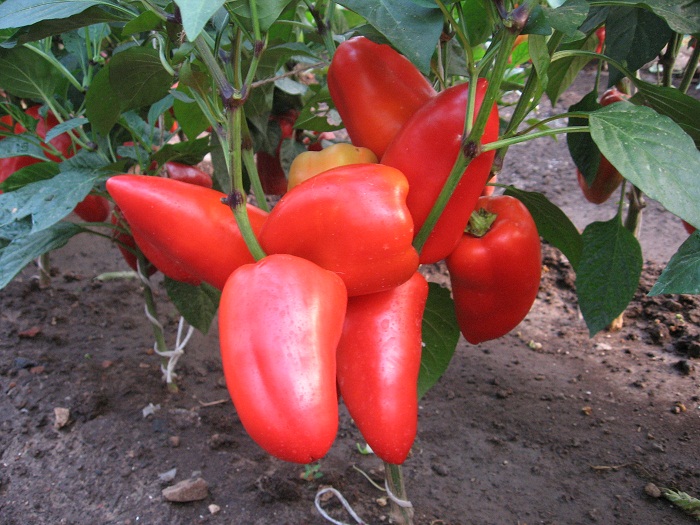 Sweet pepper is a thermophilic, southern plant. When growing in our country, he needs to create comfortable conditions. Some varieties do not take root at all in the northern regions.
Sweet pepper is a thermophilic, southern plant. When growing in our country, he needs to create comfortable conditions. Some varieties do not take root at all in the northern regions.
However, the selection does not stand still! For many years of cultivation of sweet pepper in atypical conditions for it, scientists have developed many varieties and hybrids that are stable in all respects.
Content
Rules for choosing a resistant grade to low temperature
Pepper cannot be planted and forgotten, it must be looked after, watered, fed, cultivated, protected from diseases and pests, harvested weeds and formed. A vegetable is of high value, and demand, as you know, creates supply. On the shelves of seed shops you can find many not only resistant to low temperatures and diseases varieties and hybrids of pepper, but also undemanding to care.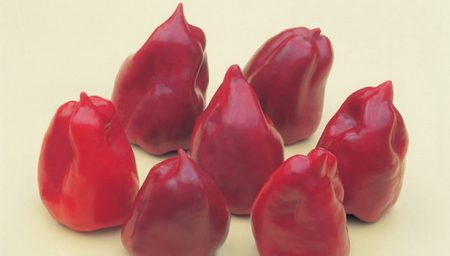
In order not to make a mistake with the choice, one should remember a very important point. Hybrids (marked F1) were obtained by crossing several varieties of pepper. They give offspring, incorporating all the best qualities of the original plants. It is these peppers that steadily accept all surprises from the weather, they are not afraid of common diseases of the culture. But it’s hard to say how undemanding they are to care.
Choosing pepper for regions with a cool climate, you should carefully analyze the conditions in which it will be grown. It is necessary to take into account all the most important nuances, we list the main recommendations:
- It is advisable for residents of the northern or central regions to opt for peppers of early or medium maturity. They will have time to give the crop before the onset of cold weather;
- peppers emit a well-lit, closed from strong winds, flat area with permeable, fertile and non-acidic soil;
- the best precursors for pepper will be onions, garlic and legumes;
- when growing tall peppers in advance, think over the organization of supports for garter. Varieties and hybrids whose bushes grow above a meter are best planted only in greenhouses;
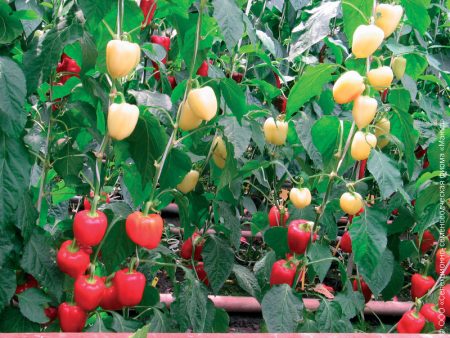
- in too cold regions, you can’t do without a greenhouse or film shelters, even the most persistent peppers will not take root in the open ground;
- watering is carried out regularly, pepper does not develop in over-dried soil, however, the culture does not grow in wetlands. Watering is carried out in the morning as early as possible, so that the foliage has time to dry before a cool night;
- Do not forget about feeding. Peppers need nutrition a couple of weeks after planting in a permanent place, during flowering, as well as during the formation and filling of fruits.
All these tips will help to grow healthy peppers that can not only withstand harsh climatic conditions, but also give a good, high-quality crop.
Rules for growing pepper seedlings
In the homeland of sweet pepper, it is grown from seeds as a perennial crop for several seasons in a row. But in countries where the summer is short, for example, we need to plant a plant every year, and only in seedlings. How to prepare seedlings of sweet pepper: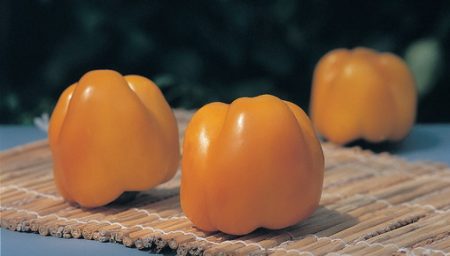
- sowing is carried out from the second half of February to mid-March. The exact dates are determined by checking the information on the package;
- containers, soil and seeds are prepared in advance;
- the box is filled with soil, grains are laid out, watered, covered with a transparent film and put in a warm place;
- when the seeds hatch, the shelter is removed and the box is rearranged on the lightest window sill, and the room temperature is maintained at 25–27 ° C;
- seedlings that have acquired two true leaves can be dived into separate containers;
- at all stages of seedling growth, peppers are watered with warm water, lightened and, if necessary, fed;
- 2 weeks before planting, they begin hardening, lower the temperature in the room, if this is not done, it will be difficult for the bushes to take root in the new conditions;
- peppers are transplanted to a permanent place when they acquire 7 or 8 leaves.
Varieties resistant to disease and low temperature
Let's move on to the description of the most persistent, early ripe pepper varieties that have high immunity to common diseases of the culture and are not afraid of low temperatures. Many of them tolerate drought and heat very well.
Nafanya
The variety is ideal for climatic conditions of the middle zone of Russia and the Ural region. He is not afraid of viruses and fungi, shows excellent resistance to sharp temperature drops. The plant is compact, usually not higher than 80 cm.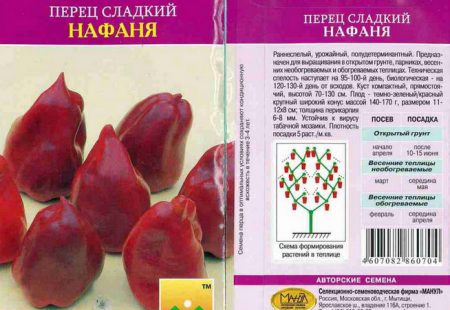
In shape, the fruits are conical with a pointed tip, dark red, sometimes with a distinct purple hue. The weight of one meaty and tasty pepper does not exceed 180 grams. The fruiting period is long, yield - 15 kg / m². Nafanya variety can be planted in open and protected ground.
Tomboy
The variety is very convenient in that it can be planted both in greenhouses and on the street, in the open. The bushes are neat, a little higher than 70 cm. The taste and marketability of the fruits are excellent, they are uniform, fleshy, tasty and very juicy, they easily tolerate transportation. On one plant, up to 25 peppers are tied.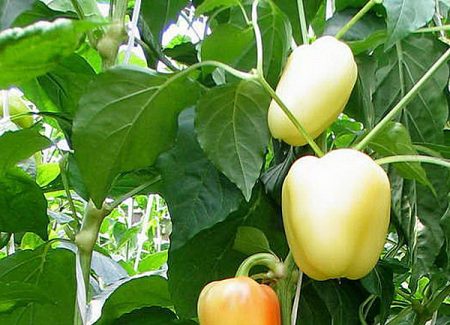
The fruits are golden orange in the shape of a cone with a rounded tip. The average weight of one pepper is about 125 grams. Sorvanets extremely rarely get sick and do not suffer from a sharp change in day and night temperatures.
Actor
You cannot grow this productive variety without reliable support; sometimes the bush reaches one and a half meters in height. It is better to plant it in sheltered ground, there it will not suffer from wind or heavy rains. As the bushes grow, they tie up several times. Diseases of culture and low temperatures Lycedea is not afraid.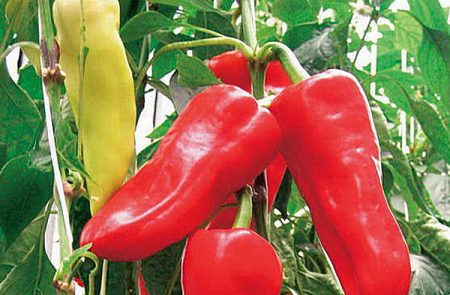
The average weight of the fruit is 300 grams, one plant forms up to 15 bright orange peppers. In shape, they are elongated-conical with a rounded nose, red. The variety is characterized as very tasty, juicy, fragrant and thick-walled.
Bagration
Also not a short variety, the height of the bushes is about a meter, but it can be planted on the street. It has very valuable characteristics for cool regions - resistance to cold and disease, especially to verticillosis and tobacco mosaic.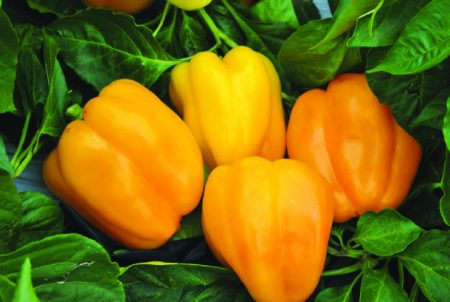
Fruits in the form of a cube, yellowish-orange, sometimes with green patches weighing up to 200 grams. During a season, up to 15 fleshy, juicy and incredibly tasty peppers are removed from one plant. A very valuable and popular variety for universal use in cooking.
Varieties for Siberia
Siberia has a sharply continental climate, gardeners here have a hard time, summers are short and cool. In such conditions, even the most resistant to low temperatures peppers should be allocated a place in the greenhouse or under a film shelter.
Previously, only thin-walled, small-fruited varieties that did not differ in juiciness and rich taste were grown in Siberia, now everything is different. Not only has there been a choice of seeds with fleshy and tasty fruits, it is now possible to grow crops even in open ground. But to make a design for temporary shelter still stands just in case.
Novosibirsk
The variety was bred in Siberia, it is recommended for cultivation in greenhouses, hotbeds or under film shelters. Novosibirsk gives the crop in the early stages.The maximum height of the bush is 120 cm. Red, prismatic fruits are small, their weight does not exceed 60 grams, but are thick-walled and juicy. In good conditions, with proper care yield up to 10 kg / m².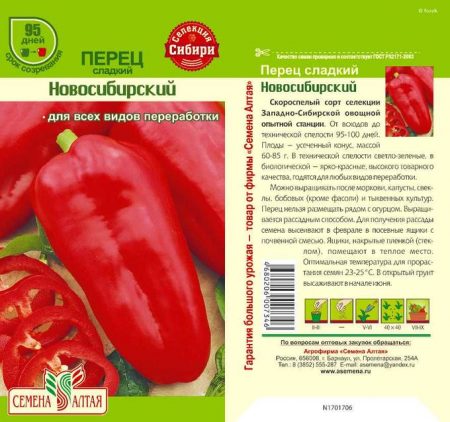
Siberian
This variety is best adapted to the climate of Siberia. The plant is compact, just above half a meter. It has increased resistance to cold and disease, keeps up to date in the early stages.
Red cube-shaped peppers, sweet, tasty, meaty and juicy. The maximum weight of the fruit is about 170 grams. Yields, even with minimal care, remain at a high level; in good years, you can collect about 7 kg / m² of peppers.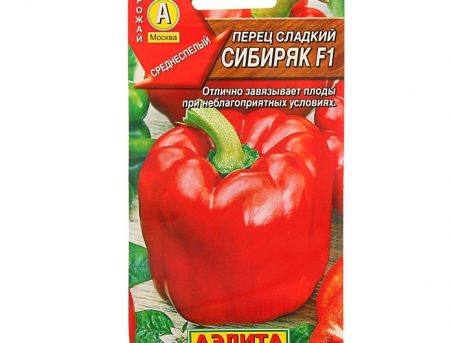
Gingerbread man
A very neat plant just above half a meter, peppers ripen in the early stages. Kolobok does not have any requirements for growing conditions; he is comfortable both in the greenhouse and on the street. Peppers are very tasty, thick-walled, red in the shape of a cube. The weight of one fruit is about 160 grams, yield 6 kg / m².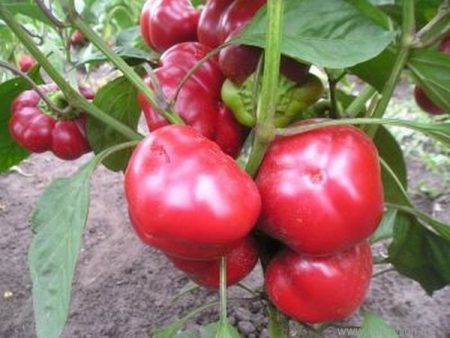
Firstborn of Siberia
The variety is also bred in Siberia and fully acclimatized to local conditions, keeps up to date in the early stages. The height of the plant is about 50 cm, the bushes are very neat, they are easy to care for. Pyramidal peppers, thick-walled, red weighing up to 60 grams. Taste and commercial qualities are very high, the fruits, although not large, but very juicy. Productivity is about 4 kg / m².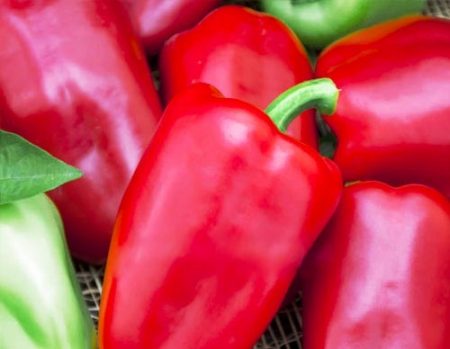
Pepper for the Urals
The climate of the Urals, although not critical for the cultivation of sweet pepper, cannot be called favorable, it has a cool, very unstable summer. To get a good harvest, varieties should be selected early.
Hero
Most often in cold regions this particular variety is grown, it keeps up to date and is not afraid of low temperatures. Immunity to diseases is excellent. The bush is not higher than 65 cm, spreading. Peppers are conical prism-shaped, red, thick-walled, very pleasant to taste, juicy. The average weight of the fruit is about 200 grams, yield up to 1 kg / m².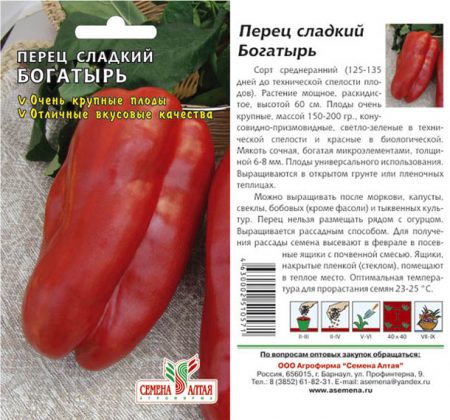
Red Bull
Sredneranny grade, steady and productive, bushes are high, and peppers are large. Garter and reliable protection from the wind are required; it can also be grown in open ground. Fruits up to 500 grams, thick-walled, cylindrical in shape, elongated. Taste and commercial qualities are high.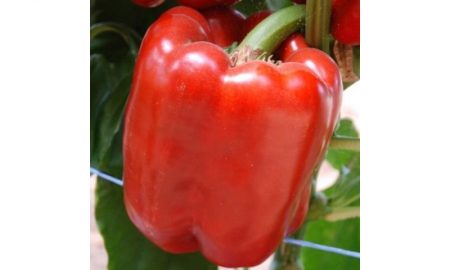
Yellow bull
It differs from its counterpart only in color and weight of the fruit, the remaining characteristics are completely identical. The yellow bull has bright yellow peppers, their weight ranges from 200 to 300 grams.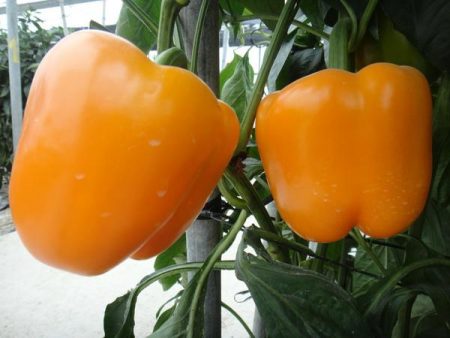
Winnie the Pooh
An unusual, decorative variety, its main feature is a very neat bush, whose height does not exceed 40 cm. And also, one cannot but note the location of the fruits on the plant, they grow in clusters. Red cone-shaped peppers, thick-walled, sweet and juicy weighing up to 60 grams. Productivity up to 2 kg / m², early ripening.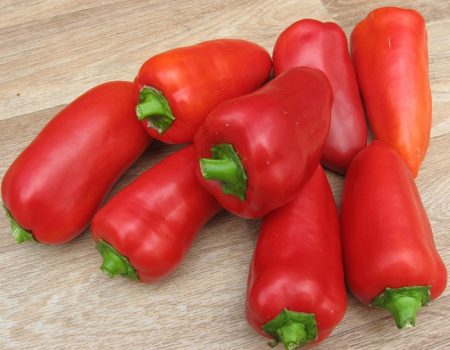
Montero
The variety is planted on the street, under film shelters, in an ordinary or heated greenhouse, it is unpretentious. But in any conditions, the plant needs to provide support for the garter, as the bushes can grow up to 130 cm in height.
The peppers are fleshy, juicy and sweet, red in the shape of a prism. Fruits mainly weigh about 300 grams, but in comfortable conditions, with painstaking care, individual specimens can weigh almost 900 grams. Productivity up to 16 kg / m².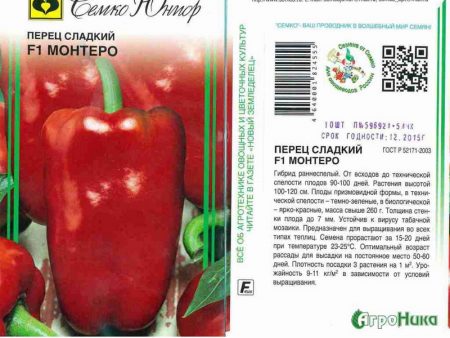
Pioneer
The variety was bred specifically for the Urals, it can be planted in the open air and not worry about the condition of the plant with temperature changes. Pioneer can not be called fruitful pepper, but it is stable, every year, in any weather, it gives at least 1 kilogram per square meter. The plant is compact, up to 75 cm tall. The peppers are red, small, up to 60 grams, but juicy and fleshy, conical in shape, with a pointed nose.
Following the tips regarding the choice of seeds and observing the rules of agricultural crop culture, you can grow healthy peppers in any region, even in the Urals and Siberia. All varieties described above require standard care, while they consistently give good yields.
Reviews
Elizabeth.We in Siberia already got the hang of growing even atypical, exotic peppers, but not everyone succeeds. It is better, of course, to select zoned varieties. By the way, a lot depends on how well grown seedlings are. I have my own, time-tested, favorite varieties, this is Kolobok and Novosibirsk. Harvest, do not get sick and easily tolerate temperature changes. The fruits are delicious fresh, in various dishes and spins.
Boris I will single out the best, in my opinion, varieties for the Urals - Pioneer, Bogatyr and Montero. They never let me down, although I do not spend any preventive spraying and visit the country only on weekends. Part of the seedlings goes to the greenhouse, and some of them are planted in the open-air courtyard, the amount of harvest is almost the same. The only thing you need to do is carefully prepare the soil and seeds.




 Calorie pepper stuffed with meat and rice - BZHU per 100 grams
Calorie pepper stuffed with meat and rice - BZHU per 100 grams Gorky pepper - the best varieties for open ground
Gorky pepper - the best varieties for open ground Hot pepper seeds - the best varieties for open ground and reviews
Hot pepper seeds - the best varieties for open ground and reviews Capsicum tincture for hair - how to use and reviews
Capsicum tincture for hair - how to use and reviews